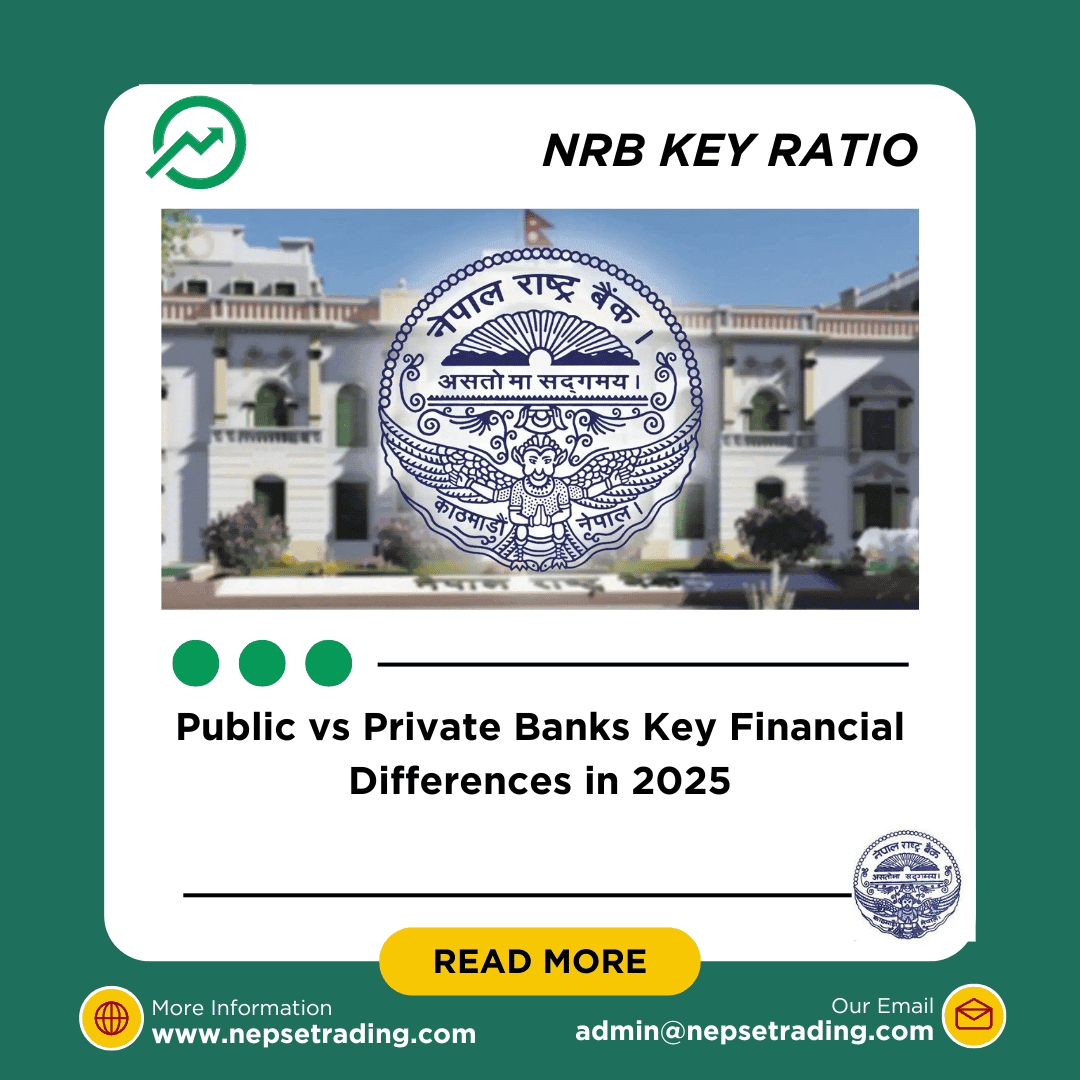By Sandeep Chaudhary
Public vs Private Banks Key Financial Differences in 2025

The NRB mid-July 2025 (Asadh 2082) report highlights clear structural differences between public (state-owned)and private (joint venture & domestic private) commercial banks in Nepal. Both play vital roles in the economy, but their financial indicators reveal contrasting strengths and weaknesses.
1. Capital Strength (CAR & CCAR):
Public banks—Nepal Bank, Rastriya Banijya Bank (RBB), and Agriculture Development Bank (ADBL)—maintain an average CAR of 12.70%, slightly below the private sector’s 12.80%, showing that private banks are marginally stronger in capital adequacy. However, Standard Chartered Nepal (CAR 17.82%) and NIMB (CAR 13.73%) far outperform public counterparts. In terms of Core Capital Ratio (CCAR), private banks again lead, reflecting higher retained earnings and stronger capital buffers.
2. Liquidity Position:
Public banks, despite having the largest depositor base (over Rs. 11 trillion combined), maintain better net liquidity ratios (40.80%) compared to private banks (33.86%). This indicates they are more conservative in lending, holding higher liquid assets. On the other hand, private banks like Citizens Bank (84.45% CD ratio) and NMB Bank (84.31% CD ratio) push liquidity closer to lending limits, signaling more aggressive growth strategies.
3. Loan Quality (NPLs):
This is the biggest dividing line. Public banks show higher NPL levels—with Nepal Bank at 4.47%, RBB at 3.59%, and ADBL at 3.26%—reflecting challenges in managing legacy bad loans and government-directed lending. By contrast, private leaders such as Everest Bank (0.38% NPL) and Standard Chartered (1.47% NPL) showcase superior risk management. This gap highlights why investors often favor private banks for stability.
4. Sectoral Lending:
Public banks dominate prescribed sector lending, especially ADBL, which allocates 59.55% of its portfolio to agriculture, energy, and MCSMEs. Private banks generally hover around 30–35%, meeting the regulatory minimum but focusing more on urban retail and corporate lending. This makes public banks more aligned with government development priorities, while private banks chase profitability.
5. Profitability & Spreads:
Private banks enjoy higher spreads (around 4–5%), driven by efficient operations and selective lending. NIC Asia, for example, earns a spread of 6.28%, compared to RBB’s modest 3.59%. This translates into stronger earnings and higher dividends for private bank shareholders. Public banks, while large in size, remain constrained by legacy costs, political interference, and relatively lower profitability ratios.









